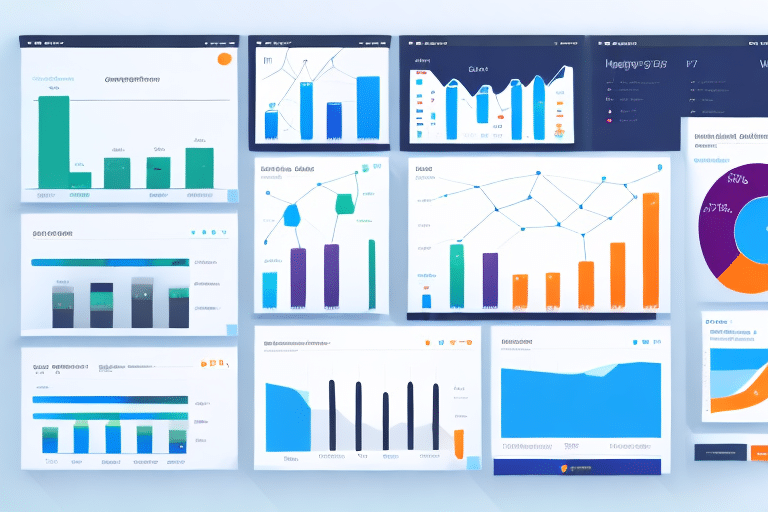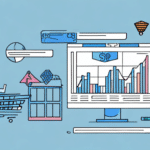Choosing the Right Technology Stack for Scaling Your Ecommerce Operations
As your ecommerce business grows, it becomes imperative to have a scalable technology stack that can handle increased traffic, volume, and complexity. Selecting the appropriate technology stack is a critical decision for any ecommerce business aiming to scale quickly and efficiently. This article delves into the factors to consider when choosing the right technology stack for ecommerce scaling, identifies key components of a scalable technology stack, explores various available technology stacks, and provides best practices for implementing and managing your chosen technology stack.
Understanding the Importance of a Technology Stack in Ecommerce Scaling
A technology stack encompasses the tools, programming languages, frameworks, and libraries used to build and run a web application. It serves as the foundation for your ecommerce website, with its scalability directly impacting the platform's performance, reliability, and security. A well-chosen technology stack can significantly enhance your ability to scale operations by allowing easy addition of new features, handling increased traffic, minimizing downtime, and improving the overall user experience.
However, selecting the right technology stack is not a one-time decision. As your ecommerce business evolves, so do your technology needs. Regularly assessing and updating your technology stack ensures it continues to meet your business requirements. Staying abreast of the latest technology trends and advancements can provide your ecommerce business with a competitive edge and help maintain its relevance in a dynamic market.
According to a Statista report, ecommerce sales in the U.S. are projected to reach $1.08 trillion by 2024. A robust technology stack is essential to manage this growth effectively.
Factors to Consider When Choosing a Technology Stack
When selecting a technology stack for ecommerce scaling, several critical factors must be evaluated:
Ease of Scalability
The chosen technology stack should effortlessly scale to accommodate increased traffic and sales volume. Assess whether the stack supports multiple servers, caching mechanisms, and other performance optimizations to manage high traffic and complex operations efficiently.
Flexibility and Adaptability
A flexible and adaptable technology stack can incorporate new technologies seamlessly, future-proofing your ecommerce store. This adaptability is crucial for integrating emerging tools and frameworks that can enhance functionality and user experience.
Cost-Effectiveness
Cost is a significant consideration when selecting a technology stack. The stack should be cost-effective both in terms of initial development and ongoing maintenance, upgrades, and support. Evaluate the total cost of ownership to ensure it aligns with your budget constraints.
Security
Security is paramount in ecommerce. The technology stack must provide robust security mechanisms and adhere to web application security standards to protect sensitive customer data and maintain trust.
Scalability Testing
Before finalizing a technology stack, conduct scalability testing to ensure it can handle anticipated traffic and transaction volumes. This testing helps identify potential bottlenecks or performance issues that need to be addressed pre-launch.
Integration with Third-Party Services
Consider how well the technology stack integrates with third-party services such as payment gateways, shipping providers, and marketing tools. Seamless integration can streamline operations and enhance the overall customer experience.
Evaluating Your Business Needs and Requirements
Before selecting a technology stack, it’s crucial to assess your ecommerce business’s specific needs, challenges, and requirements. Factors to consider include existing infrastructure, desired customer experience, expected user traffic, required functionalities, necessary integrations, and compatibility with existing legacy systems. A thorough evaluation ensures that the chosen technology stack aligns with your unique business objectives.
Additionally, consider the scalability of your business. As your operations expand, your technology stack should be capable of accommodating growth without necessitating a complete overhaul. Assess the technical expertise required to maintain and update the stack. If your team lacks certain skills, you may need to invest in training or seek external support.
Key Components of a Scalable Ecommerce Technology Stack
A scalable ecommerce technology stack should comprise several key components that work cohesively to optimize platform performance:
- Robust Hosting Infrastructure: Reliable hosting ensures high uptime and fast load times, essential for user satisfaction and SEO.
- Caching Mechanisms: Caching improves website speed by storing frequently accessed data for quicker retrieval.
- Content Delivery Network (CDN): A CDN distributes content across multiple servers globally, reducing latency and improving load times.
- Web Application Firewall (WAF): A WAF protects your site from malicious attacks and vulnerabilities.
- Performance Optimization Tools: Tools that monitor and enhance website performance are vital for maintaining a seamless user experience.
- Customer Relationship Management (CRM) System: A CRM system manages customer data, tracks behavior, and personalizes the shopping experience, fostering customer loyalty and driving sales.
Integrating these components effectively can significantly enhance the scalability and efficiency of your ecommerce platform.
Exploring Different Technology Stacks for Ecommerce Scaling
Several technology stacks are available that can be scaled to support ecommerce operations. Some popular options include:
- LAMP Stack (Linux, Apache, MySQL, PHP): A widely-used and stable option, suitable for many ecommerce platforms. However, it may not offer the same scalability as newer stacks.
- MEAN Stack (MongoDB, Express, Angular, Node.js): Known for its flexibility and ability to handle large datasets, making it ideal for high-traffic ecommerce sites.
- Ruby on Rails: Preferred by startups for its ease of use and rapid development capabilities. It is highly scalable but may come with a steeper learning curve.
The choice of technology stack depends on the specific needs and goals of your ecommerce business. For instance, the MEAN stack is often chosen for its full-stack JavaScript capability, which can streamline development processes.
Performing a Cost-Benefit Analysis
Conducting a cost-benefit analysis is essential to evaluate the potential costs and benefits associated with each technology stack option. This ensures that the chosen stack is both cost-effective and scalable for your ecommerce operations. Consider the initial implementation costs as well as long-term expenses related to maintenance and upgrades.
Additionally, factor in the potential benefits such as increased operational efficiency, enhanced user experience, and improved security. A comprehensive cost-benefit analysis helps in making an informed decision that balances quality and cost effectively.
Resources such as Harvard Business Review provide valuable insights into conducting effective cost-benefit analyses for technology decisions.
Best Practices for Implementing and Managing Your Technology Stack
Implementing and managing your chosen technology stack requires strategic planning and execution. Follow these best practices to ensure a smooth transition and ongoing management:
- Robust Change Management: Establish a comprehensive change management process to handle the integration of the new technology stack without disrupting operations.
- Technical Expertise: Ensure your team possesses the necessary skills to manage and maintain the technology stack. Invest in training or consider hiring specialized personnel if needed.
- Ongoing Performance Monitoring: Continuously monitor system performance to identify and address issues promptly, ensuring sustained efficiency and effectiveness.
- Regular Updates and Maintenance: Keep your technology stack up-to-date with the latest updates and patches to maintain security and performance standards.
Adhering to these best practices facilitates the effective implementation and management of your technology stack, supporting the scalability and success of your ecommerce operations.
Assessing and Optimizing Your Technology Stack Over Time
Regularly assessing the performance of your technology stack is crucial to ensure it continues to meet your ecommerce business's evolving needs. Conduct performance audits and testing to identify any weaknesses or areas for improvement.
Implement load testing, fault tolerance testing, API testing, and performance testing to evaluate the stack's ability to handle increased demand and recover from failures. Based on the findings, make necessary adjustments and optimizations to enhance performance and scalability.
Staying proactive in evaluating and refining your technology stack ensures that your ecommerce operations remain efficient and capable of supporting ongoing growth.
Conclusion: Maximizing Efficiency with the Right Technology Stack
Choosing the right technology stack is a pivotal decision for any ecommerce business aiming to scale efficiently and effectively. By thoroughly evaluating your business needs, understanding key components of a scalable technology stack, exploring various technology stack options, conducting a cost-benefit analysis, and adhering to best practices for implementation and management, you set a strong foundation for your ecommerce operations.
Regular performance assessments and iterative optimizations further ensure that your technology stack continues to support your business's growth and adapts to changing market dynamics. Investing time and resources into selecting and maintaining the appropriate technology stack is essential for sustaining long-term success in the competitive ecommerce landscape.






















